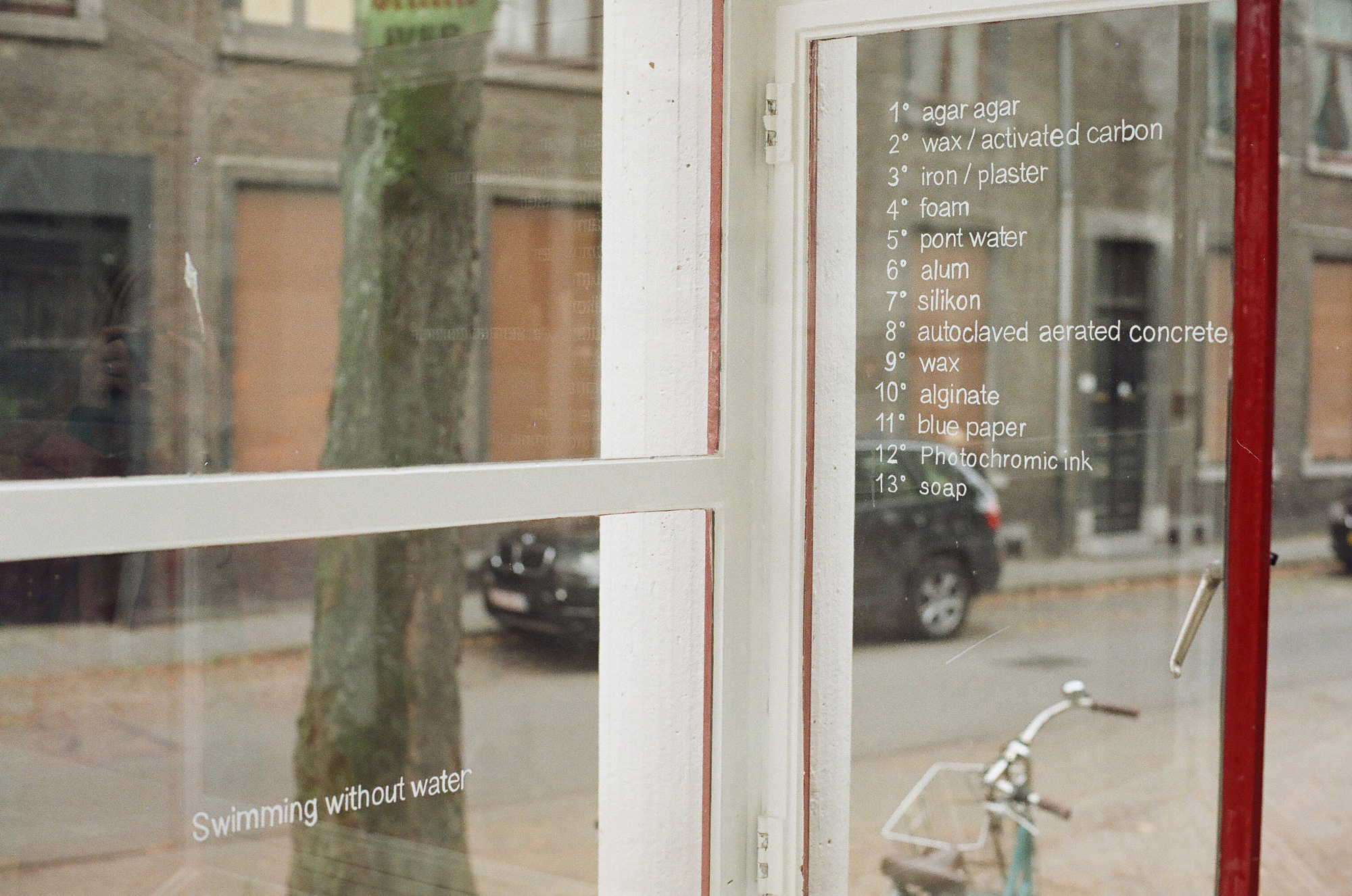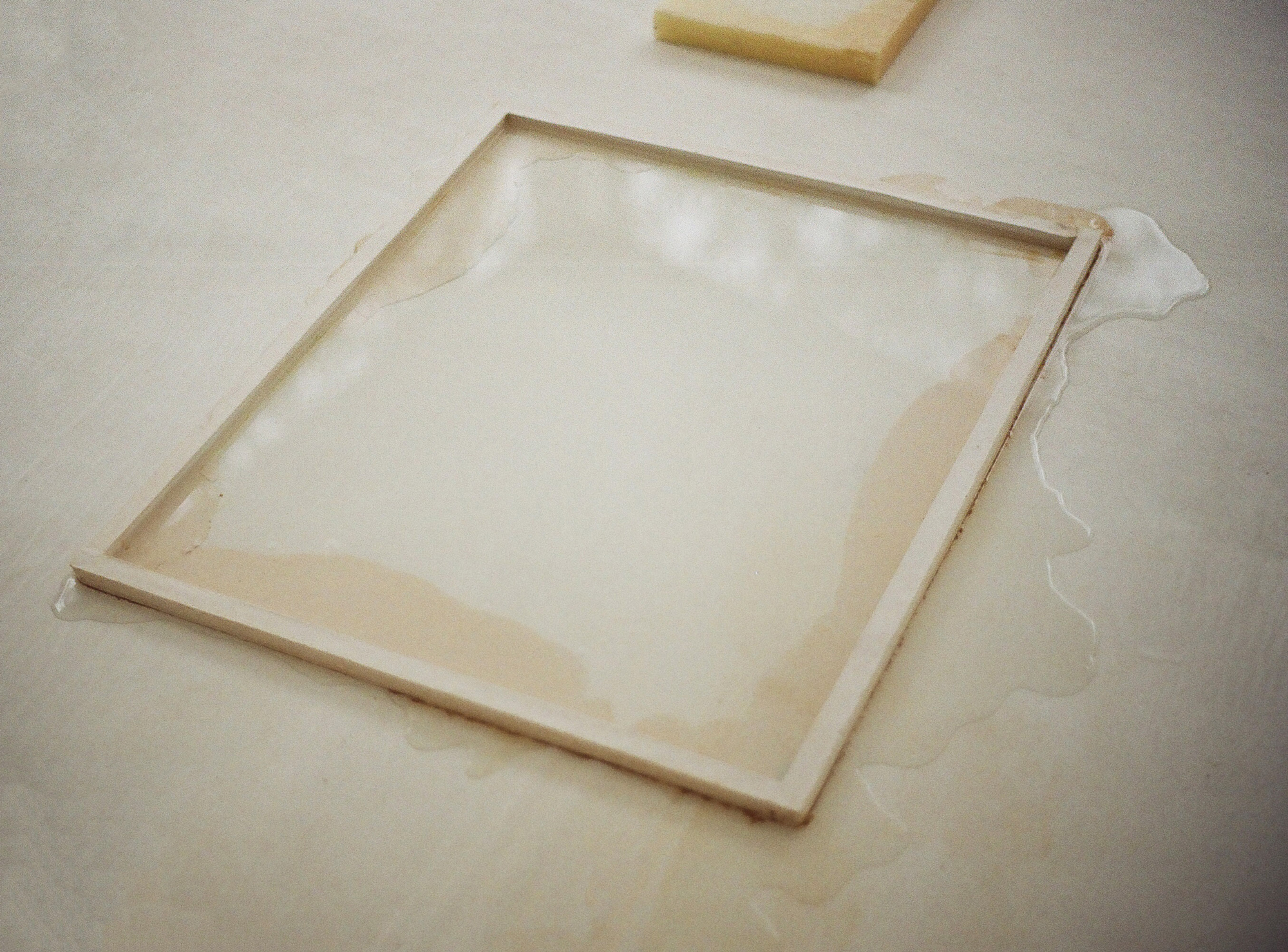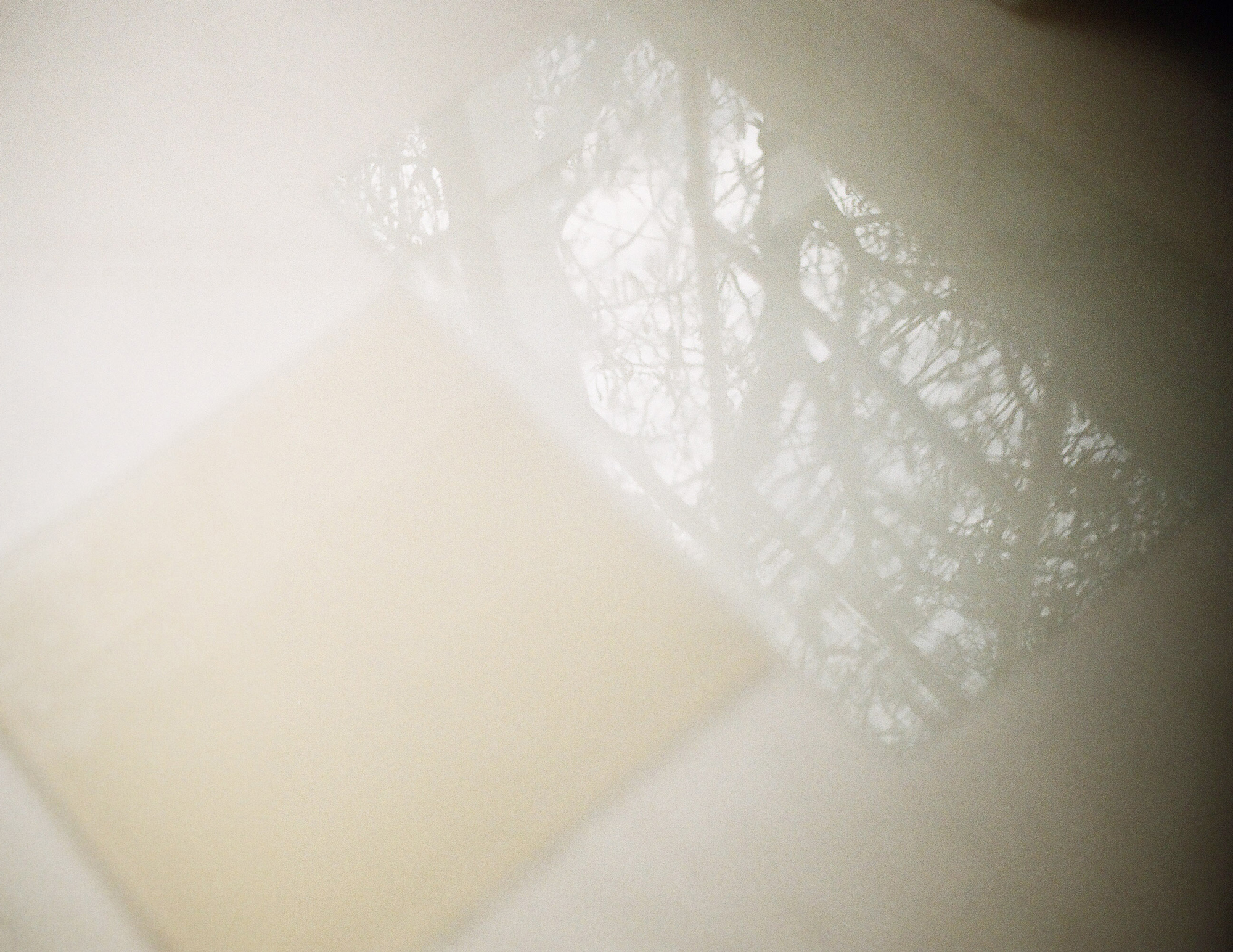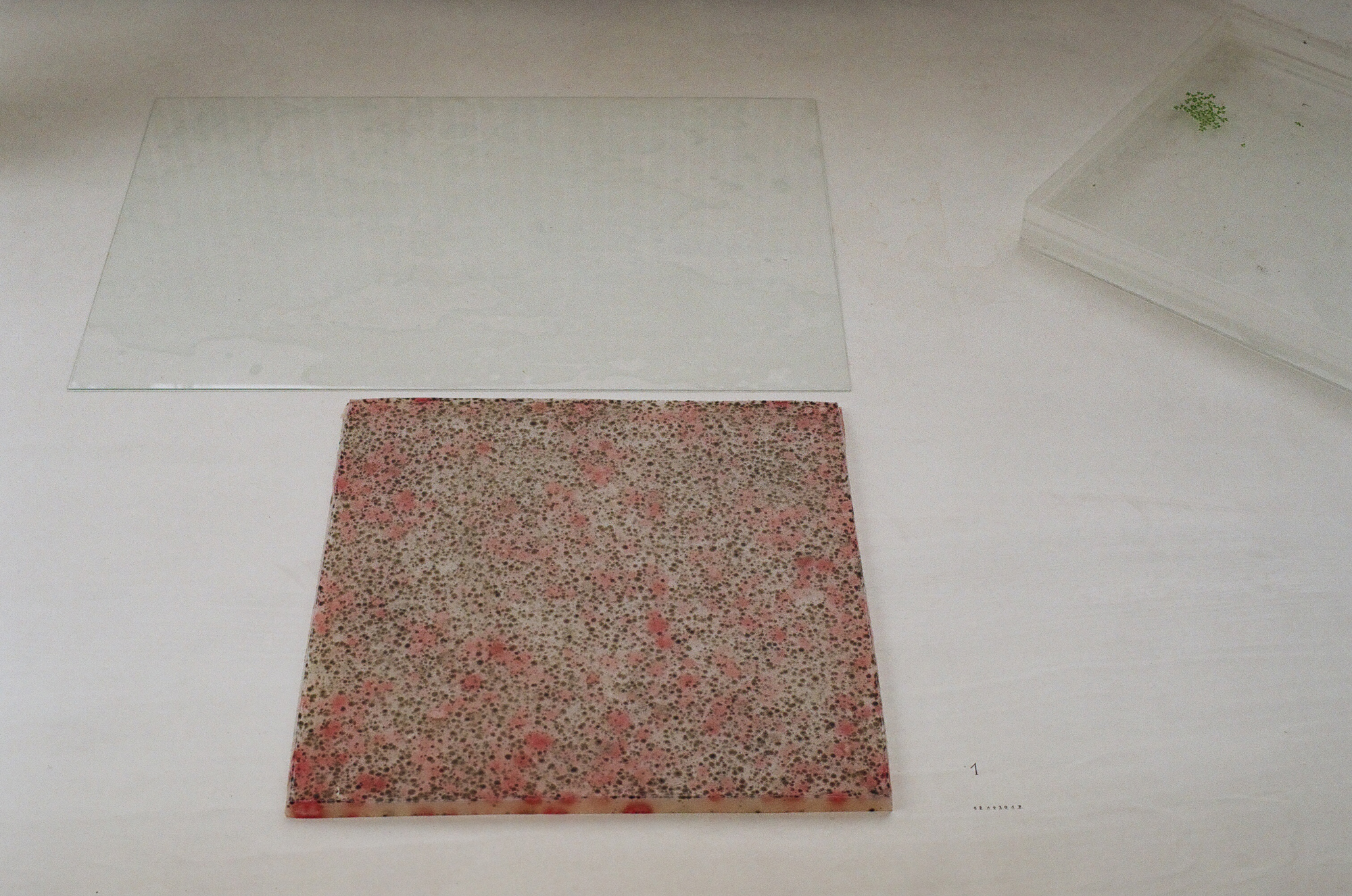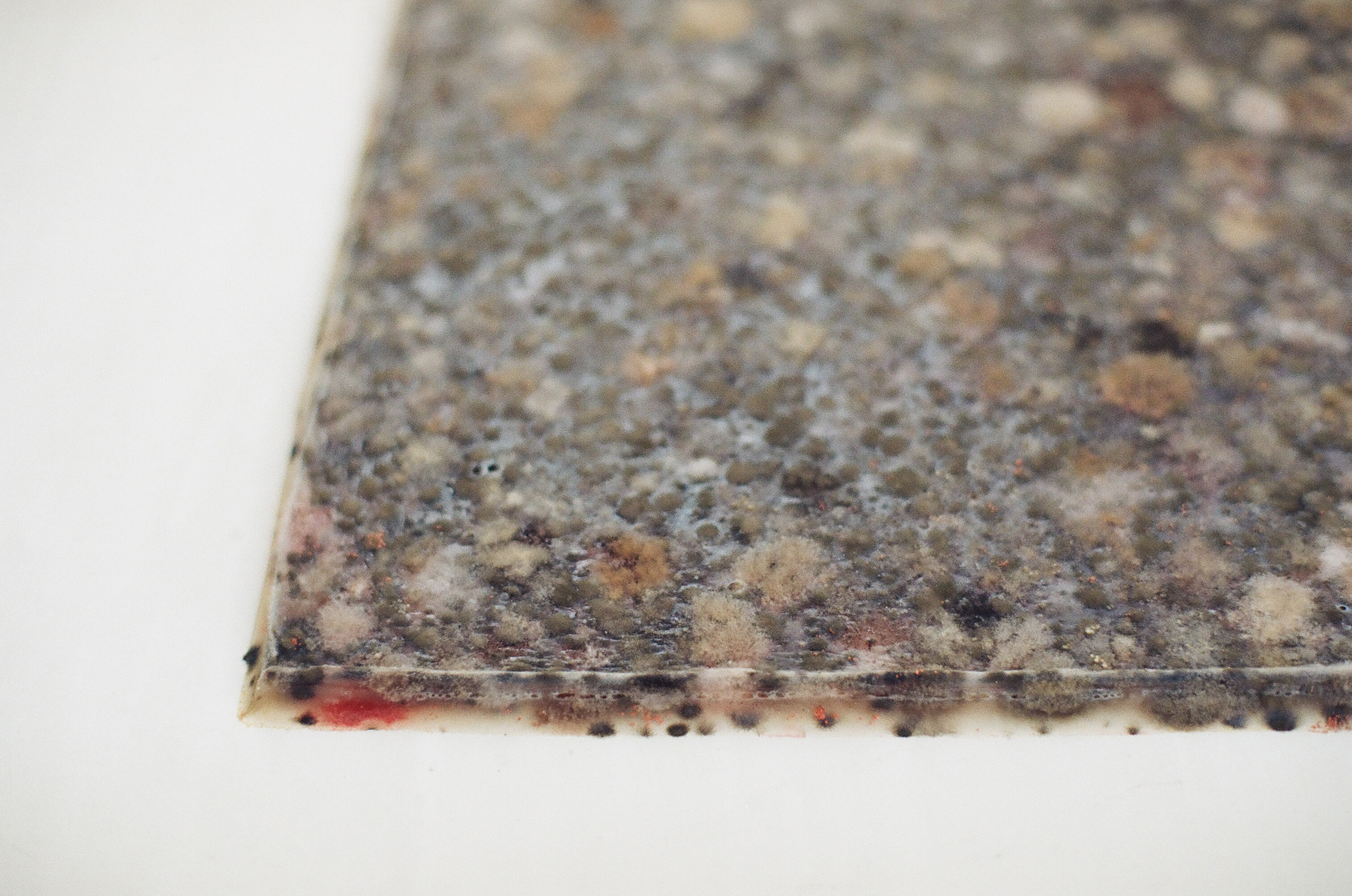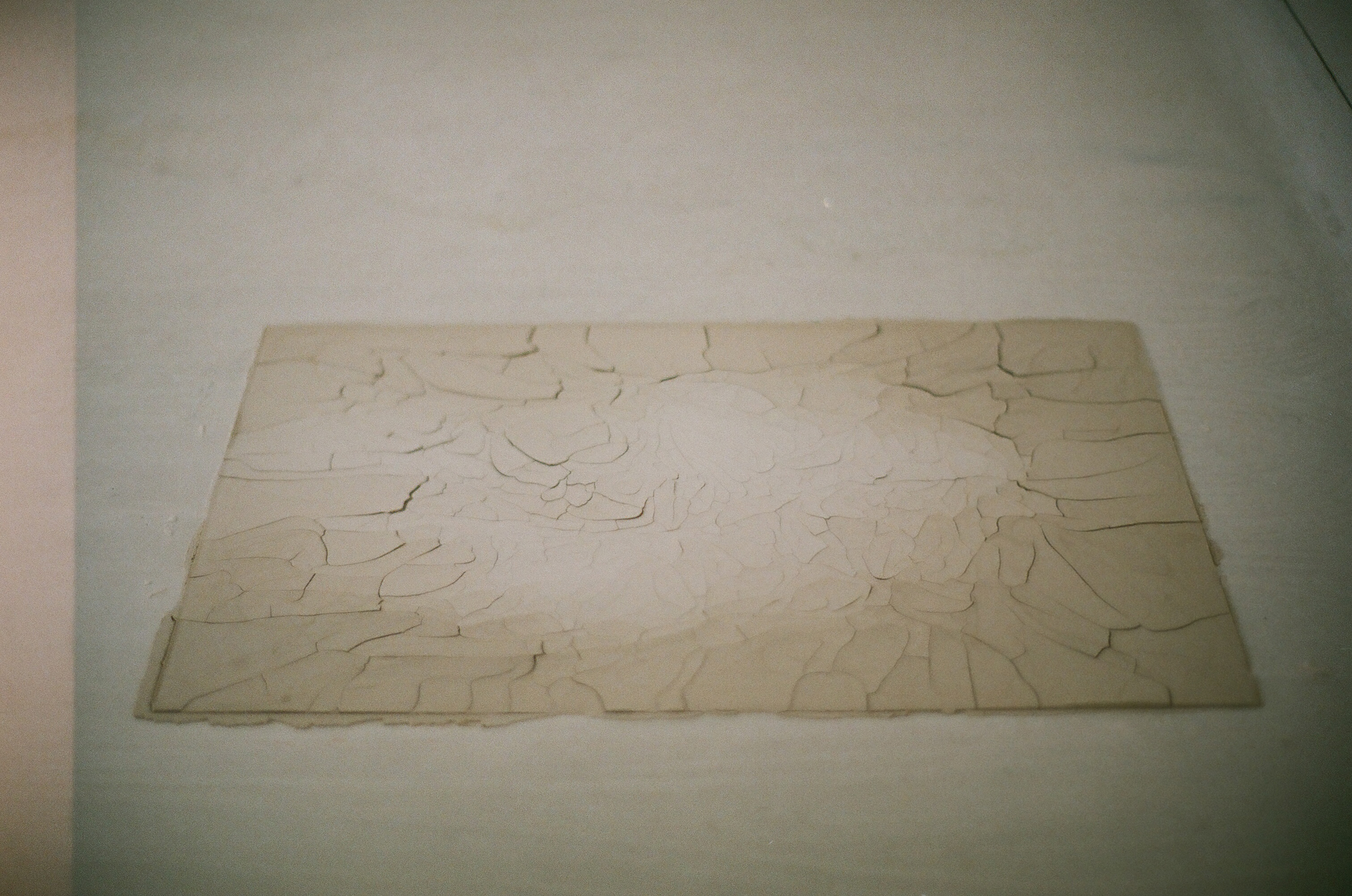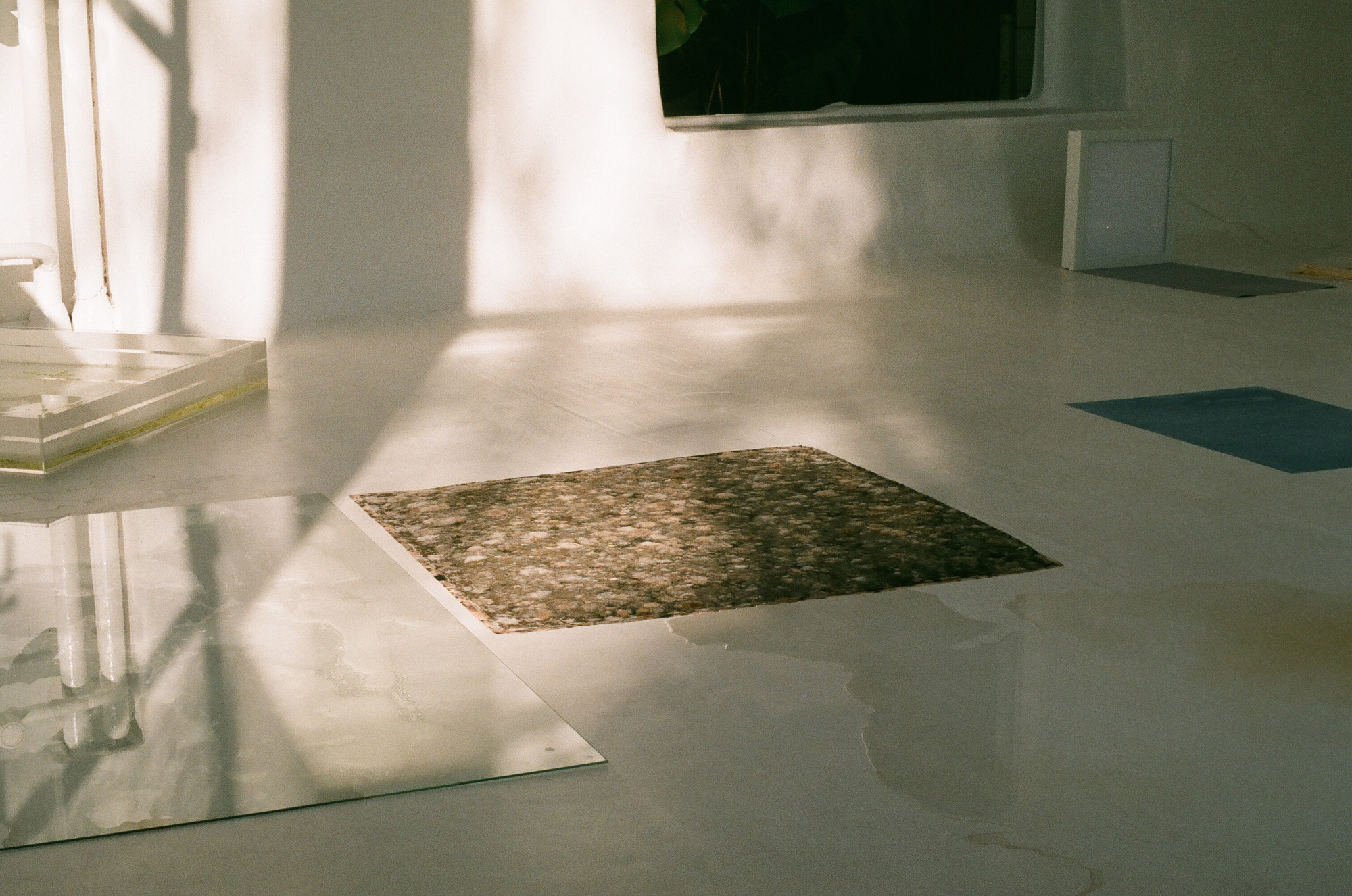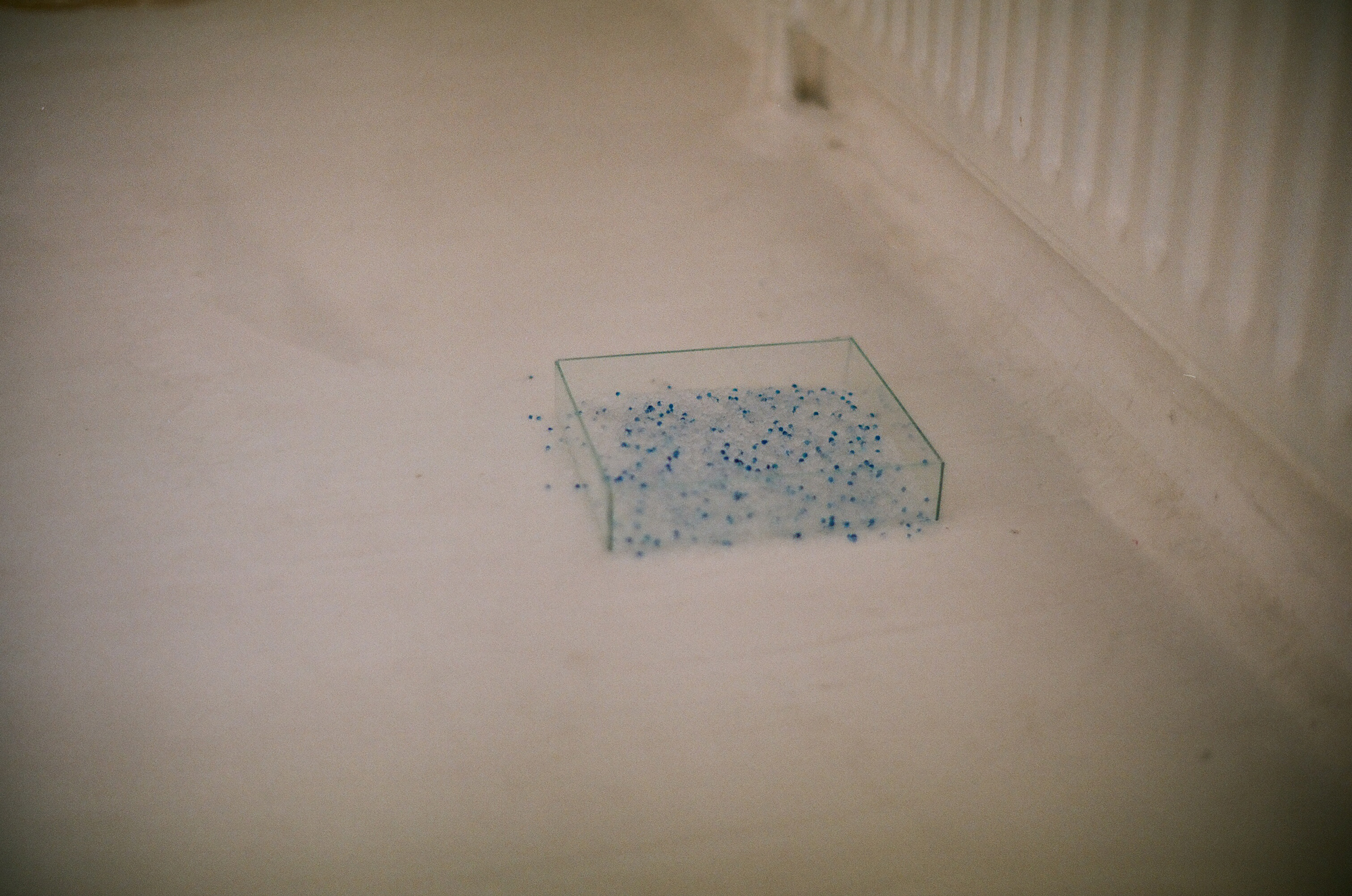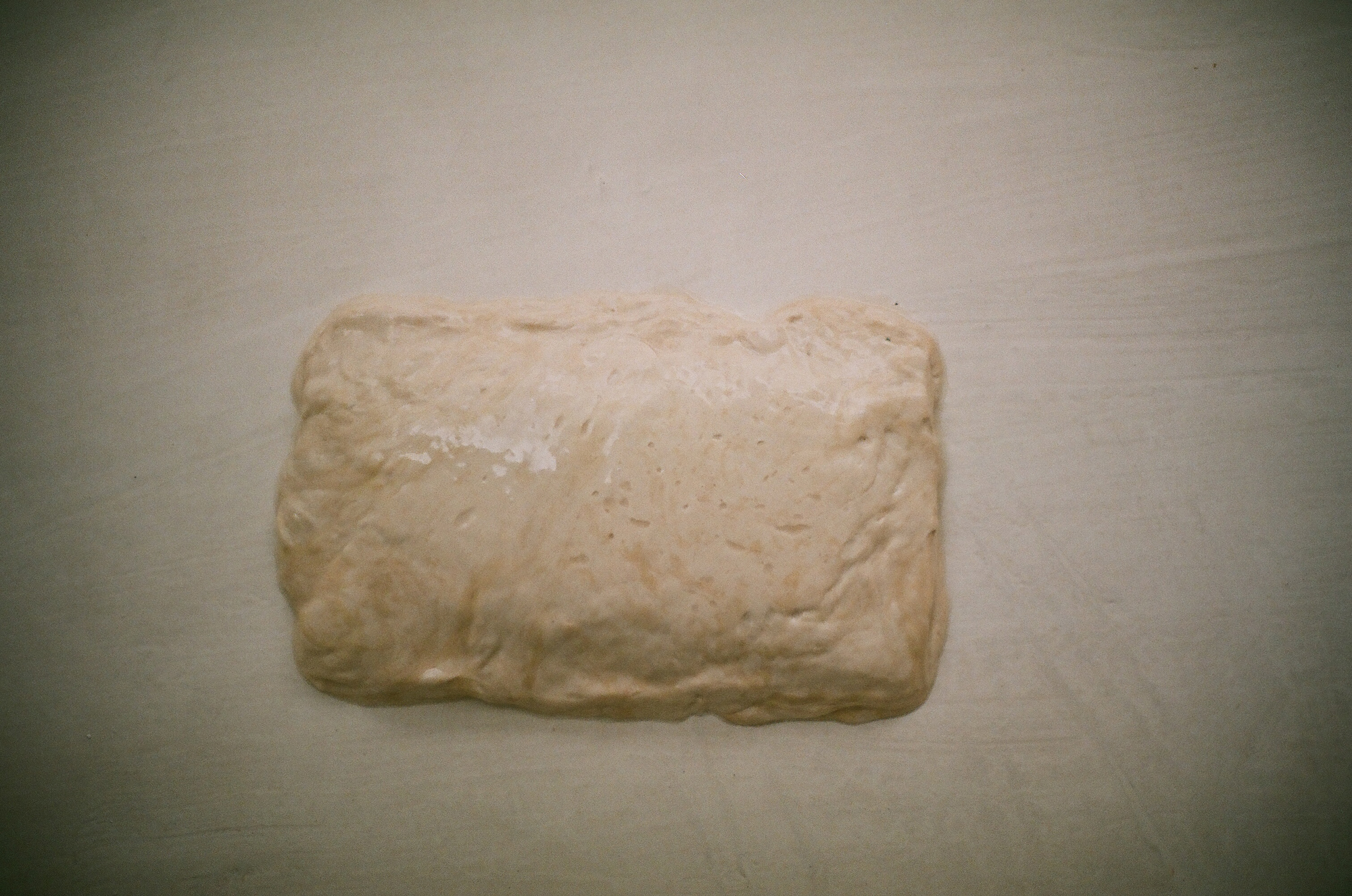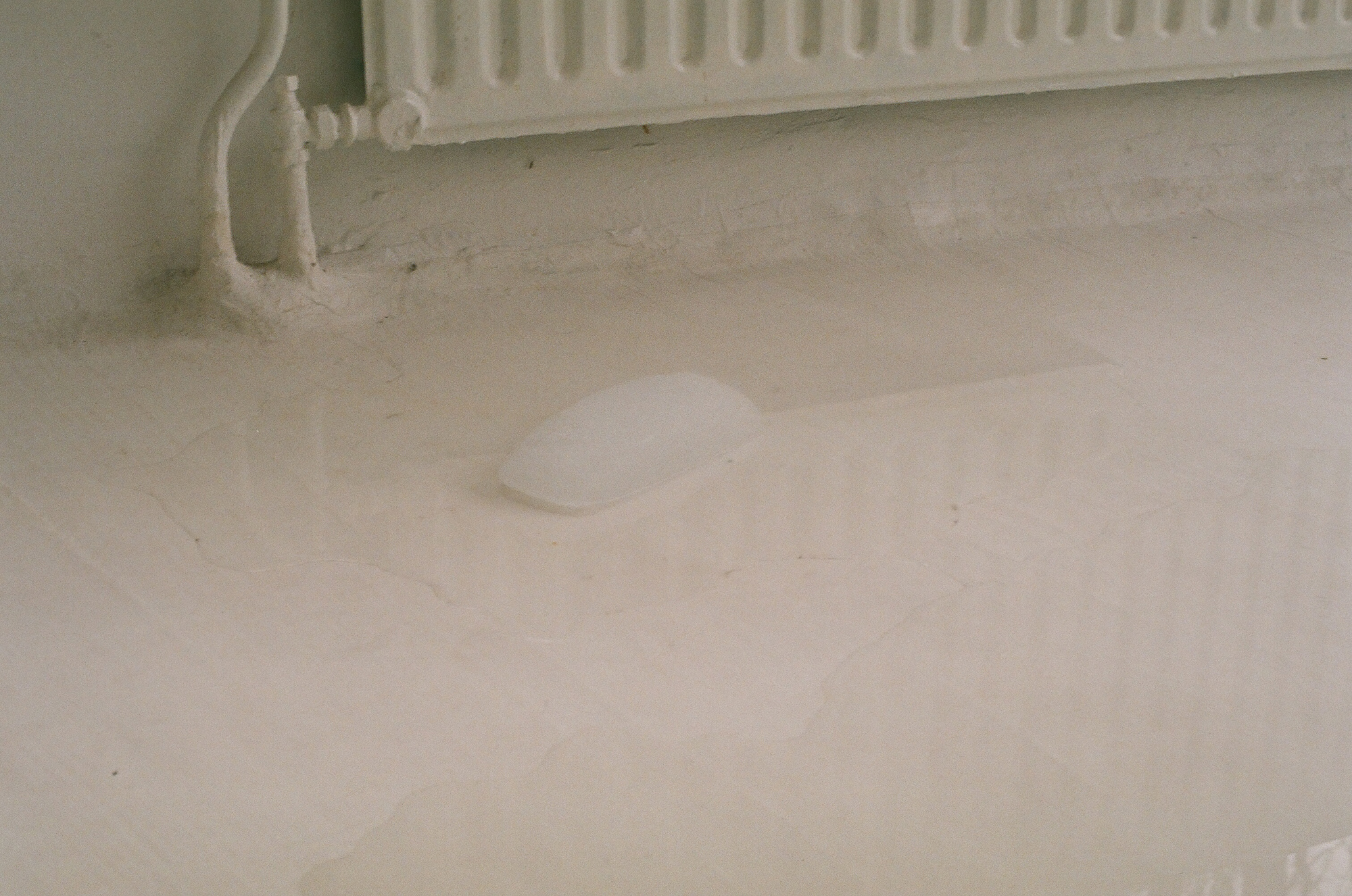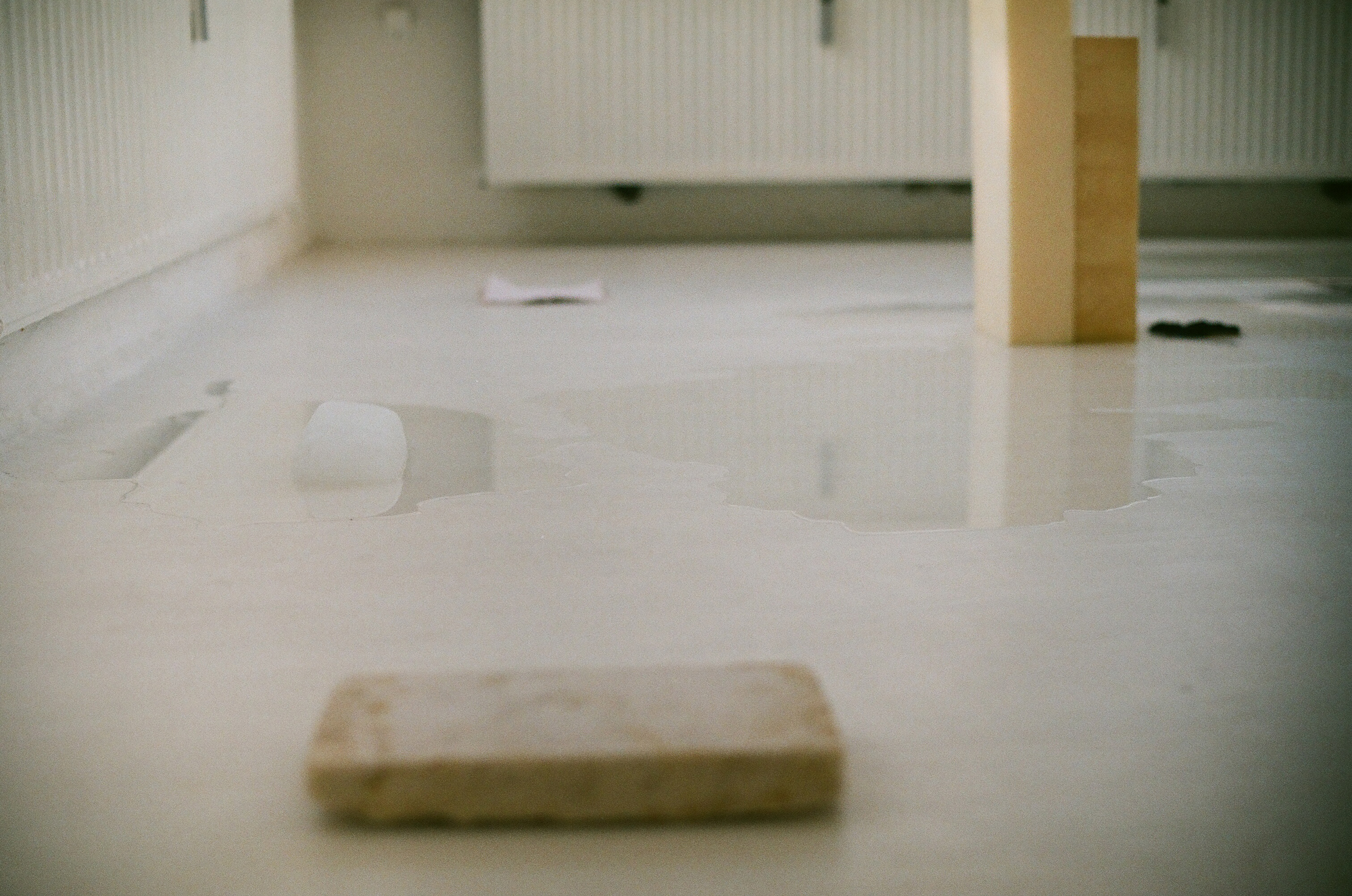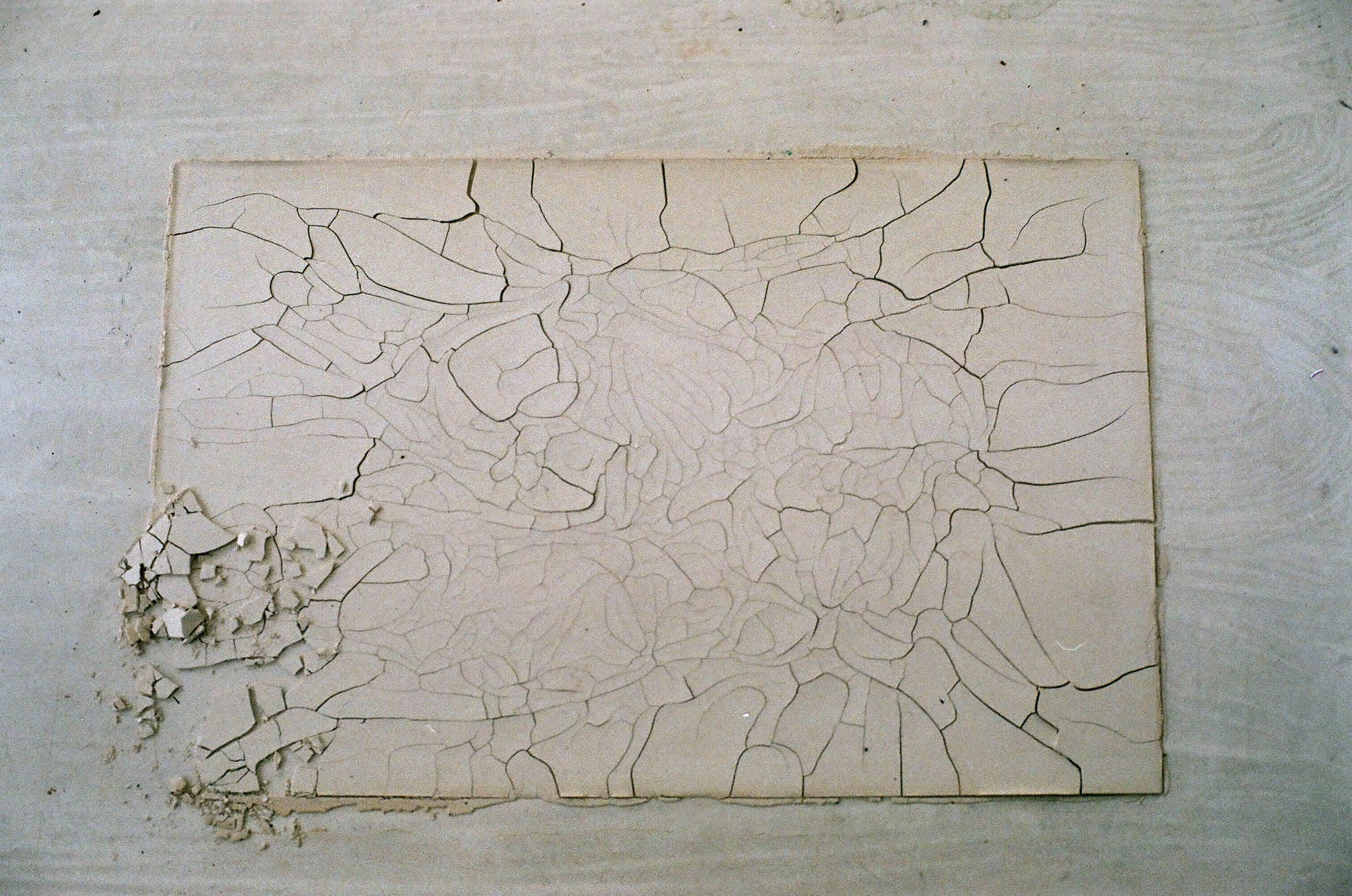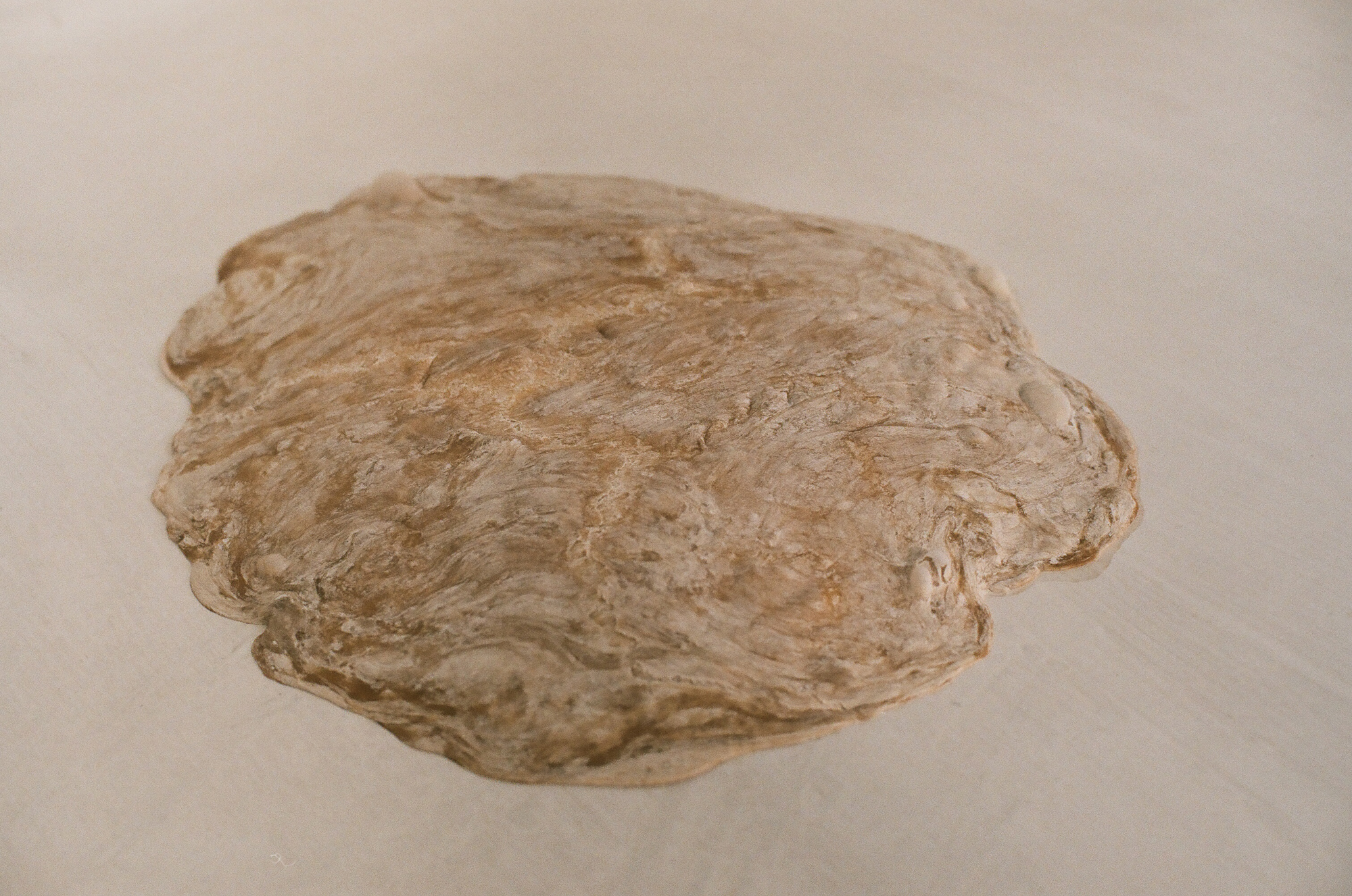Oliver Barstow
Swimming without water | Anne Büscher and Mio Fujimaki
The exhibition Swimming without water was a collaboration between Anne BĂĽscher and Mio Fujimaki, former participants in the Temporary Program Materialisation in Art and Design (MAD) at the Sandberg Instituut, which took place for the duration of a month in an empty shopfront in Maastricht, the Netherlands. While the shop itself was closed, the exhibition, which comprised of time-based materials, could be viewed through the shop window. The exhibition "opened" at the end of the month-long period, while the materials continued their transformation, indifferent to the presence of the audience. The article that follows, written by Oliver Barstow, also a former participant of MAD, provides an introduction to the visual documentation of the exhibition.
Soap
If I rub my hands with it, soap foams, exults...
The more complaisant it makes them, supple,
smooth, docile, the more it slobbers, the more
its rage becomes voluminous, pearly...
Magic stone!
The more it forms with air and water
clusters of scented grapes
explosive...
Water, air and soap
overlap, play
at leapfrog, form
combinations less chemical than
physical, gymnastical, acrobatical...
Rhetorical?—Francis Ponge. Soap, trans. Lane Dunlop (Standford: Standford University Press, 1998), 13.
“But I believe it is more accurate, and more urgent, to discover how Ponge's 'petits poemes en prose' might open readers to the possibility of a
subjectivityto come, asubjectivityof thecommons, that accounts for the profoundly subtle network of interaction between humans and nonhuman agents.”—Carey, Joshua. “Introduction: The Challenges of Francis Ponge” in Partisan of Things (Chicago: Kenning Editions, 2016), ii.
Agar-agar, wax, carbon, iron, plaster, foam, water, aluminium, silicone, concrete, wax, alginate, paper, ink, soap—what do these things have in common? They are all materials, ubiquitous in their application, combinations of which underlie daily life as we know it—the food that we eat, the buildings we inhabit, the vehicles we drive. These are “hyperobjects” to quote Timothy Morton, objects or materials so massively distributed in time and space that they become invisible, can no longer be located in and of themselves, and are indistinguishable in the endless entanglement of objects that claim to be real.1 It is then in an attempt to disentangle and expose the underlying nature of the object world that this same list of materials forms the basis of Mio Fujimaki and Anne Büscher’s recent exhibition Swimming without water.
Installed in an empty shop front with street facing windows in Maastricht, the Netherlands, Swimming without water works to isolate each of these materials, resisting the logic that would have them combined to form functional objects. Instead, much like the subject of a Francis Ponge prose poem, each material is given the space and subjectivity to function on its own accord. The common denominator in all of this, and also an ingredient encountered in Ponge’s work, is the element of time—in the case of the exhibition, the duration of a month—and its associated forces: entropy, decay, decomposition. It is temporality—the passing of time—invisible in itself but evident through the shop window in the changing light from night to day, that leaves its mark, forming cracks, fissures and unidentifiable growths, transforming the material.
Where do we situate the artists in all of this? Like Ponge, Büscher and Fujimaki are in direct conversation with the materials. Note, not their materials but the materials. As Joshua Carey puts it when describing the effect of Ponge’s work “… [the work] accounts for the profoundly subtle network of interaction between humans and nonhuman agents.” Büscher and Fujimaki embark on a journey with the material. It is the artists who initiate the engagement—precisely, deftly—but it is the materials that lead the way. Through this process the artists’ hand is gradually erased from the work as it progresses, transferring subjectivity to the material. What can we take from this act of transference? Through the encounter with the agency of the material in Swimming without water, we have entered a space where the human subject is decentered.
Swimming without water is not something we humans do well. It is a decidedly non-human, and non-animal activity, reserved for the invisible molecules and microbes—hyperobjects—that swim inside all matter. In my own encounter with this work, viewed on a computer screen—another type of window at once removed from the shop window of the space itself—I am confronted by a post apocalyptic, post human space. This is a world in which the apocalypse has already happened, where only materials remain not as the potential through their combination for human life, but life itself; life in the absence of all that is human, life that has survived the human epoch. If one of the functions of art is to project a vision of the future into the present, then this is one in which human subjectivity and its manifestation in object form has finally run its course.
Oliver Barstow
Swimming without water | Anne Büscher and Mio Fujimaki
-
Morton, Timothy.
Hyperobjects: Philosophy and Ecology after the End of the World (Minnesota: University of Minnesota Press, 2013), 10. ↩
About the author
Oliver Barstow (South Africa) is a writer, editor and artists currently based in Amsterdam, the Netherlands. He is the editor of the Sandberg Series and the online editor of ZAM Magazine. He is also the co-ordinator and publicist for Englishes MOOC, an online art project by Nicoline van Harskamp. In 2018 he received the Mondriaan Fonds Jong Talent Award for artistic development. He graduated from the Sandberg Instituut as part of the temporary master, Materialisation in Art & Design in 2017. In 2010 he co-founded the independent art book publisher, Fourthwall Books in Johannesburg, South Africa.
